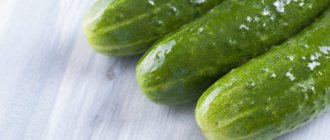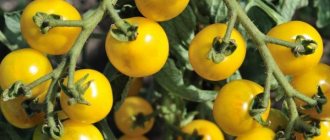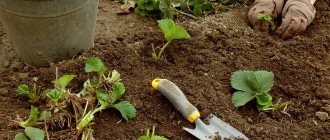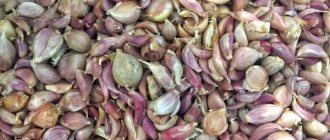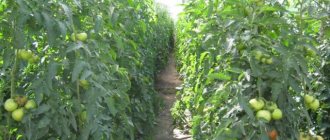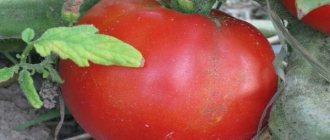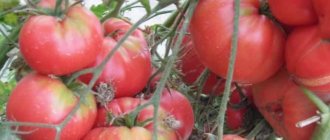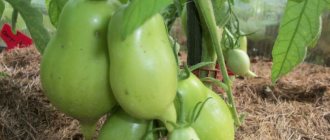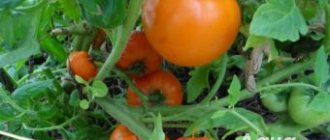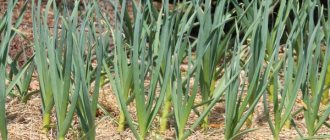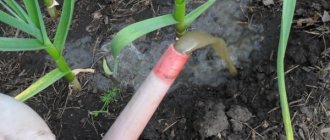Features of growing garlic
The technology for growing crops is simple, but to obtain a high-quality harvest, you must adhere to certain requirements:
- garlic is picky about the composition of the soil. The plant develops best on sandy, loamy soils. The optimal acidity is neutral;
- the culture is a freedom-loving plant, so it is recommended to allocate separate beds for garlic plantings;
- garlic is a phytoncide that protects flowers from black spot. Raspberry and gooseberry bushes are less damaged by ants and aphids. Carrots become more resistant to carrot fly. Garlic also repels borers, caterpillars, and slugs.
If the size of the plot is limited, the beds are compacted, observing the rules of crop rotation. The best neighbors are strawberries, raspberries, gooseberries, cucumbers, potatoes, tomatoes, black currants. You can allocate a place for garlic near flower beds or a flower garden with roses, gladioli, and tulips. It is not advisable to plant peas, cabbage, and beans nearby.
The right bed for garlic - soil preparation
They begin preparing the planting bed for garlic a month before planting so that it settles somewhat. Dig up the soil under the garden bed to a depth of 20-30 centimeters, simultaneously removing everything unnecessary: weeds and debris, and add organic fertilizers after digging, because garlic is very picky about soil fertility and will respond with a harvest.
Winter garlic grows best in loose and soft soil with a neutral acidity level. Loamy soil for garlic needs to be structured with a mixture of peat and sand, while sandy soil will require frequent, abundant watering and regular fertilizing.
Supporters of organic fertilizer are recommended to add ripe compost or humus before digging the soil at the rate of: 1 bucket per square meter and wood ash: 1-2 cups per square meter, which can be poured into the furrow or hole just before planting the garlic cloves.
Variety selection
The crop can be grouped according to different criteria (winter/spring, early/late). An important sign is the presence/absence of an arrow.
In varieties that produce arrows, one ring of 4-12 identical large cloves is formed. Popular spring and winter varieties:
- Gribovsky Yubileiny is a medium-sized winter crop that exhibits high disease resistance and is well preserved;
- Gribovsky 60 – winter, highly resistant to freezing, not damaged by diseases;
- Herman - large heads are formed, which are perfectly preserved for 7-8 months;
- Gulliver is a spring garlic that belongs to the mid-late varieties (growing season 87-97 days). Large head weighing 250-300 g, consists of 3-5 cloves.
In spring crops that do not produce arrows, smallish segments are arranged in one row, twisted in a spiral. Popular varieties:
- Victorio is a mid-season disease-resistant variety. The bulb weighing 40-45 g is formed from 13-16 teeth;
- Elenovsky is a mid-season variety, characterized by stable yield, 15-19 cloves are tied in a head weighing 18-24 g;
- Sochi 56 - the variety has a long shelf life - almost 2 years. The head weighing 45-50 g is formed by 25-30 teeth. 0.9-1 kg of garlic is dug from a square meter of bed;
- slices of the mid-season Abrek variety have a particularly pungent taste. A head weighing 25-30 g contains 13-15 cloves.
Distinctive features of winter garlic: rich pungent taste, high yield, relatively short shelf life.
The yield of spring varieties is low, but the plants tolerate spring cold well and can be stored with virtually no loss until the next season.
Varieties of winter garlic
In order to be successful in growing winter garlic, it is very important to choose a variety that is adapted to your area. There are varieties of garlic that shoot and do not form shoots. Those varieties that produce shoots are usually more hardy and winter-hardy. We offer you the characteristics of several popular winter varieties, among which you can find the one that is right for you.
- Lyubasha is a variety of Ukrainian selection with good winter hardiness and dryness, which can be perfectly stored for up to 10 months without loss of quality. The height of the stem is 90-120 cm, the number of cloves is up to 7 pieces, the average weight of one clove is 15-10 g. The bulb is white with barely noticeable purple veins.
- Ukrainian white is cultivated both as a spring and winter crop. The variety does not shoot, but is perfectly stored, the weight of the bulb is from 50 to 140 g, the number of cloves in the bulb is from 4 to 12 pieces.
- Spas is also a Ukrainian variety, bred by Lviv breeders, with high yield and keeping quality. The number of cloves is from 7 to 9, the average weight of the bulb is from 60 to 100 g. Resistant to nematode and fusarium.
- Jubilee Gribovsky is one of the best old varieties with a very sharp taste, high yields, keeping quality and resistance to pests and diseases. The bulb weighs about 40 g and consists of 5-8 cloves.
- Yubileiny 07 is a productive variety, resistant to fusarium, and stores well. The bulb is white-lilac with streaks, consists of 5-8 cloves, the taste is semi-sharp.
- Reliable - a productive variety with a semi-sharp taste, stored for almost a year in a warm room, the bulb, white with lilac streaks, consists of 6-7 cloves.
- Violet Kharkov is a bolting, productive variety that is resistant to disease. The bulb is purple, rounded and flattened, weighing from 30 to 60 g, the number of cloves is up to 6 pieces.
- Messidor is a productive variety bred in Holland. There are up to 10 cloves in an onion.
Landing dates
A distinctive feature of the culture is the vegetative method of propagation. Spring garlic is planted only with cloves. When planting winter crops, aerial bulbs and cloves are used. Planting dates are chosen depending on the type of plant.
Spring garlic is planted in the spring. Planting work begins as soon as the snow melts and the soil warms up to 5-7° C. In the south, planting work begins at the end of March, in the middle zone the suitable period is the end of April/beginning of May. In the Urals and Siberia, garlic is planted in May. If the soil retains moisture, then the beds are not pre-moistened. The formation of teeth begins in late June - early July.
Winter garlic is planted when the soil temperature drops to 10-12 °. You can plant in the cold, but you cannot bury the cloves in frozen soil. Recommended dates by region: south – end of October/beginning of November, middle zone – end of September/beginning of October, Siberia, Ural – from the second half of September.
Features of planting winter garlic
Planting garlic before winter in the Moscow region
Actually, there is not much difference between growing winter garlic in Ukraine and in the Moscow region - it all depends on when and how winter begins. If winter begins with snowfall, then you won’t even have to cover the garlic with film, but if the winter is snowless during severe frosts, the garlic will freeze without shelter. The most important thing is to prevent the crops from freezing in the soil, so be guided by the amount of snow: a lot of snow - do not cover the garlic, a little - cover it. In the spring, when the shoots appear, all your fears will be left behind.
- Okra is magical in every way.
Pre-winter landing in the Urals
Ural gardeners recommend not mulching winter garlic plantings, but simply covering them from frost with roofing material or film. It is better to mulch the area in the spring, when the seedlings hatch. In addition, if garlic becomes smaller and smaller over the years and is stored worse, the Urals recommend using bulbs rather than cloves as planting material: in the first year, the bulbs will produce medium-sized single-clove bulbs, but in the second year they will become noticeably larger.
The Urals do not recommend loosening the soil, since when loosening the top row of roots is cut off, the plant may not receive enough nutrients, will become weaker and, perhaps, even get sick. A mulched area in the spring makes loosening an unnecessary procedure and preserves the health of the plant.
In the photo: Garlic flowering on the site
Autumn planting of garlic in Siberia
In Western Siberia, the planting time for winter garlic is earlier - from mid-September to the first week of October. In addition, covering the area with crops with roofing felt before snow falls is mandatory. Otherwise, planting and caring for garlic is not much different from these processes in other areas.
How and when to plant onions before winter
The nuances of planting garlic
Each method of growing garlic has advantages and disadvantages. The crop varieties, planting period, and climatic features of the region are taken into account.
In open ground
When growing garlic in the garden, choose areas with neutral, fertile soil. The soil should not be dry, but it is extremely undesirable to plant crops at the dacha in lowlands where melt/rain water can stagnate. The planting technology can be divided into several stages:
- the bed is dug up, fertilized in advance (30 g of superphosphate, 20 g of potassium salt, a bucket of humus are added per square meter of area), since garlic loves fertile soil;
- To grow a large fruit, healthy and whole garlic cloves are selected and disinfected. The cloves are immersed in an ash solution (400 g of ash is boiled for about 30 minutes in 2 liters of water);
- the seed is germinated - wrapped in a moistened cloth and placed in a warm place for 2-3 days;
- in the garden, prepare a bed with furrows at a distance of 20-25 cm, 7-10 cm deep;
- The cloves are planted bottom down, in increments of 6-8 cm.
See also: When to tie garlic leaves
It is recommended to plant winter varieties of garlic on a large head. It is not advisable to place the beds in the shade.
In the greenhouse
When growing garlic in protected soil, the problem of changing weather is eliminated, and you can get an earlier harvest. The agricultural technology of growing crops in a greenhouse is not very different in the sequence of processes, but has several nuances:
- at the initial stage of the growing season, it is necessary to water the plants correctly (every 4-5 days). Use settled water;
- in dry weather, the beds are also watered in the middle of the growing season to obtain large and juicy fruits;
- stop irrigating the soil a month before harvesting.
The technology of growing garlic all year round on artificial media, without soil, is gaining popularity. At home, you will need a little nutrient solution. But we must take into account that this is a light-loving culture. Therefore, garlic grown hydroponically needs additional lighting.
At home
It’s easy to set up small beds of garlic on your balcony. You will need several pots approximately 20 cm high and a nutritious soil mixture. The bulbs are divided into cloves and healthy and strong planting material is selected. The cloves are placed in the ground with the sharp end up to a depth of 4-5 cm. It is better to grow the crop in open, illuminated places.
Expert opinion
Stanislav Pavlovich
Gardener with 17 years of experience and our expert
Ask a Question
Important! It is necessary to constantly monitor the soil moisture; do not allow it to dry out (water once every 1-2 days).
It will be possible to harvest when the garlic shoots begin to dry out (the period depends on the crop variety).
A few recommendations from experienced gardeners: at home, it is advisable to plant winter garlic, which is less demanding on the level of light and amount of heat, and is less likely to rot in waterlogged soil. To get feathers, you can plant spring varieties.
How to grow garlic from bulbs?
Garlic does not have seeds. Garlic is a crop with a three-year cycle: from a bulb to a single clove, then to a clove, and from a clove to the same bulb again.
The arrows are cut off as soon as the outer wrapper holding the bulbs begins to burst. They are tied into bunches and hung in a cool, shaded place to ripen.
The material is calibrated by selecting formed, dense bulbs with a diameter of 3 mm or more.
When sowing bulbs 5x5 cm per 1 sq. m, almost 400 single-toothed plants will grow , they will be enough for a bed of 10 square meters. m. When planted 20x20 cm, heads of 100 g or more will grow.
Using seeders, sow to a depth of 2–4 cm at the same time as winter garlic.
After sowing, the beds are mulched with humus or compost with a layer of 8–10 cm.
Growing bulbs in the second year will reduce the cost of seed. Plants from sets are more viable and productive.
Rules for caring for crops
Agricultural cultivation technology includes several standard stages. Caring for the plantings is not difficult; novice gardeners can easily cope with growing garlic.
Watering rules
Garlic is a moisture-loving crop, but does not respond well to prolonged drought or stagnant water. The nuances of watering affect the size of the harvest and the quality of the bulbs. To irrigate the beds, it is not advisable to use cold water from a well or artesian well. It is better to fill the container with water in advance so that it can settle and heat up. Without hassle, you can use a hose equipped with a water gun for watering. Gardeners also install drip irrigation systems or sprinkler systems.
From the beginning of May to June, the beds are watered frequently - about once a week. During the period of active crop growth, a suitable water rate is 10-11 liters per square meter area. If rainy weather sets in, watering is reduced (carried out once every 9-10 days) or stopped altogether. In case of heavy rainfall, it is recommended to dig grooves between the rows through which excess water will drain. If there is a drought, then the volume of watering is increased - up to 15 liters of water are poured per square meter of soil.
In the summer, during the period of ripening of the heads, the frequency of watering is reduced, and 2-3 weeks before harvesting, soil irrigation is stopped. If watering is continued, the fruits will not be stored well.
Fertilizer application
At the beginning of the growing season, intensive growth of roots and green mass occurs. Plants need fertilizing with nitrogen-containing mixtures. A popular option is a urea solution (a tablespoon of powder is diluted with a liter of water). 2-3 liters of solution are poured per square meter of bed.
After 20-25 days, when the bulbs begin to actively form, a second potassium-phosphorus fertilizer is applied. To obtain fertilizer, dilute 2 tablespoons of nitroammophoska in a 10-liter bucket of water.
At the beginning of July, additional mineral fertilizing (microelements, phosphorus) is possible. In August, the soil is not fertilized, and before digging up the crop, irrigation of the beds is stopped.
Advice! If the crop develops slowly, use foliar feeding. During the growth period, bushes are sprayed twice (use a urea solution).
Do I need to hill garlic?
Garlic is often planted in the spring to produce early greenery. The part of the stem that is in the ground is considered the most useful and tasty. Therefore, as the crop grows, its stem is covered with moist soil. Thanks to this procedure, the taste of the false stem is improved.
See also: When to harvest garlic in Central Russia
Weeding
This is one of the mandatory procedures in gardening/dacha work. Weeds appear in the garden before cultivated plants and draw useful and nutrients from the soil.
Therefore, garlic is constantly weeded. To simplify the work, it is recommended to combine weeding with loosening the soil. It is advisable to carry out the processes after irrigation, when the soil is moist and weeds can be easily removed by the roots.
Preparing for winter
Garlic is a resistant crop. However, it is recommended to additionally protect the seedlings from frost and temperature fluctuations. Otherwise, the seedlings will weaken, may rot, or become more susceptible to disease. There are other reasons why it is advisable to insulate winter garlic plantings:
- During occasional thaws, some teeth sprout. The shelter will provide them with protection from future frosts;
- the shelter will protect the soil from precipitation and prevent it from becoming waterlogged;
- Thanks to special covering materials, the process of sprouting will accelerate in the spring.
Before covering work, the beds with garlic are mulched - using a mixture of sand and ash. Agrofibre, fallen leaves, sawdust, and hay are used as protective materials. A reliable option for regions with harsh winters: the beds are mulched with a mixture of sand and ash, sprinkled with peat, covered with agrofibre and sprinkled with dry leaves.
Cleaning
Harvesting winter garlic begins in late July - early August. Shooting varieties indicate that the harvest time is approaching because the inflorescence wrapper is cracking. If the arrows have been cut, complete yellowing of the leaves will indicate that the heads are formed. It is impossible to be late with collection, the covering scales will begin to burst, the head will disintegrate into cloves. Garlic will not be stored.
When harvesting, you need to carefully dig up the plant with a pitchfork, pull it out of the ground, and leave it in the open sun for 12 days. Then the garlic is transferred to a drying room.
Novice gardeners often worry whether they need to water garlic when planting in the fall, because excessive moisture can destroy the cloves. In general, this culture is special; it does not tolerate excessive watering, and at the same time it grows very shallow roots. Therefore, it would be nice to figure out how often to water garlic in open ground in order to have a stable harvest.
Protection from diseases and pests
There are several most common diseases that affect garlic plantings:
- neck rot - gray spots of a depressed appearance appear on the neck of the bulb and spread to the entire fruit. Preventive measures - dig up the crop in dry weather and keep the bulbs for 2-3 days outdoors in sunny weather;
- peronosporosis (downy mildew) appears on the foliage in the form of pale green spots, gradually acquiring a grayish-purple tone. Prevention: good illumination of the area, ventilation of the beds. Therefore, plantings are regularly weeded and thinned out if necessary;
- rust is a fungal disease that attacks foliage. In order for garlic to grow healthy, it is important to follow the rules of crop rotation. During the period of active growth of green mass, it is recommended to spray the plantings with a solution of copper oxychloride (dilute liquid soap and a tablespoon of copper oxychloride in 10 liters of water). Repeated treatment is done after 7 days;
Black mold affects garlic bulbs when stored improperly. To prevent infection, the crop is ventilated and warmed in the sun.
Downy mildew or peronosporosis
The main damage to the crop is caused by the onion fly. The larvae infect the garlic heads and the plants die. To repel the pest, the soil in the beds is sprinkled with wood ash or tobacco dust.
Stem nematodes eat plant stems. The main method of control is compliance with the rules of crop rotation. Salt treatment of seed gives good results. The bulbs are soaked in the solution for 15-20 minutes (3 tablespoons of salt are diluted in 5 liters of water). Additionally, in the fall, liming of the soil is carried out (2 cups of powder are scattered per square meter of bed).
Preparing garlic for planting
To get a good harvest, you need to carefully select the cloves and properly carry out their pre-planting treatment.
Selection of planting teeth
When harvesting garlic, you should immediately select the most mature, healthy, strong bulbs for seeds. The teeth in them should be approximately the same in size, not have double or fused tips, the number of segments should correspond to the varietal characteristics. After drying, they are carefully inspected. Teeth with dents, damage to the outer shell, or cracks in the bottoms are not suitable for planting.
The presence of at least one clove in an onion with putrefactive spots or mold is a reason to reject the entire onion.
If there is a sufficient amount of planting material, large or medium cloves are used. It has been experimentally established that a large onion grows from large planting material. Shortly before planting, selected specimens are divided into cloves. This should be done carefully, trying not to damage the integumentary scales, since such injuries threaten the rotting of the teeth.
The cloves of well-ripened garlic should be easily separated from each other, have a thick skin and a dry bottom.
Disinfection of planting material
To prevent infection of future crops from garlic mites and nematodes, the slices are soaked in water with the addition of table salt (1 tablespoon per 3 liters of water). Ash lye, in which you can also hold garlic cloves, also has a disinfectant effect. Prepare the infusion as follows:
- Take wood ash (a liter jar), fill it with 3 liters of water, and let it brew for half an hour.
- After stirring, the infusion is brought to a boil and allowed to settle.
- Use the top layer of the solution. It must be drained, strained, diluted with water (1:2) and soaked the teeth in it for an hour.
To prevent fungal infections, soak the cloves for half an hour in a solution of copper sulfate (5 g of the substance per liter jar of water) or in a pink solution of potassium permanganate. The most effective multi-stage garlic treatments are:
- For spring crops: 24 hours in a solution of nitroammophoska (1 tablespoon per bucket of water), half an hour in a saline solution, 20 minutes in a solution of copper sulfate.
- For winter crops: half an hour in a saline solution, 20 minutes in a solution of copper sulfate.
Soaking garlic before planting in a solution of potassium permanganate gives good results in the fight against putrefactive infections.
At intermediate stages and after processing, the garlic is not washed with water, but is immediately planted in the beds.
Harvesting and storage
The approximate harvest period is late July-early September. There are several signs that serve as a guide:
- new leaves do not grow;
- the old foliage turned yellow and died;
- the heads have formed and acquired a color corresponding to the variety.
If you delay harvesting, the plants will begin to grow, the bulbs will disintegrate and you will not be able to store them for a long time. They dig up the crop with a pitchfork, carefully shaking off the soil. To dry, garlic is placed in a ventilated room for 7-10 days.
Before storing, the roots and leaves of the bulbs are cut off. Leave necks 2-5 cm long. A popular option is to weave garlic into braids or wreaths, without cutting off the leaves and stems. To give the braid strength, twine is used as a base. The end of the braid is made into a loop to hang the garlic on hooks. A simple option is to pour garlic into nylon stockings or simply make bunches.
The productivity of winter varieties is higher, but the bulbs are stored worse. The teeth dry out or become rotten. Therefore, it is important to maintain temperature parameters of 2-4°C and humidity 60-80%.
Storage rules
The winter harvest does not last long in Belarus. Signs of wilting are noticeable as early as January. The cloves become empty and dry, covered with brownish spots.
The best storage method is in plastic boxes. The heads are laid out in an even layer with the bottoms down, covered with two layers of paper and left in a cool place. Most of it will retain its pungency and rich aroma for a long time.
Garlic is an indispensable vegetable on our table. It is added to meat, salads, preserves, and sauces. In winter, it saves the body from vitamin deficiency and protects against viruses. By following the rules of planting and storage, you can get a high-quality vegetable that will not lose its freshness until the next harvest.
Advantages of planting before winter
Planting heads before winter has the following advantages:
- takes up little space, does not even require beds, planted scattered throughout the garden;
- can be planted next to plants that need protection from pests;
- the harvest is harvested in late summer, not autumn;
- when planted with heads, the plant tolerates winter frosts better;
- Garlic planted before winter gets sick less, is more persistent and strong.
In addition, there is no need to store planting material all winter, which saves space. Winter garlic is stored only until autumn; it won’t work longer - it dries out and loses its taste.
Then they plant
They begin to prepare for planting winter garlic in advance. To get a rich harvest, preparatory work should be carried out and, if necessary, change the structural composition of the soil. If the soil in the garlic bed is very dense, the soil is enriched with drainage materials, including sand and expanded clay. This will improve soil water permeability and gas exchange in the root zone of plants. If the soil in the garden bed has a slightly acidic or neutral reaction (pH 6-7), then no measures need to be taken to change the acidity of the soil.
1.5 months before planting, immediately after harvesting the predecessors, measures are taken to increase the fertility of the arable layer of the soil. Fresh humus and manure are not added to the ground. They use last year's organic matter, peat, and complex fertilizers, which include superphosphate and potassium sulfate. Nitrogen-containing preparations should not be used so as not to provoke active germination of garlic cloves during thaws. In the beds marked for planting, the soil is treated with phytosporin or copper sulfate to protect against fungal infections.
Fitosporin: how to use and why
Growing
Winter garlic heads need to be planted 10–15 days before the onset of the first frost. For the middle zone this is the end of September or the first ten days of October. The teeth should have time to take root, but not produce green shoots. This will allow the plant to winter comfortably.
To get a good harvest, you should follow simple rules:
- The plant is not afraid of frost, but gets wet easily. The gardener needs to choose a place that is not flooded with spring water.
- When starved of food, mice willingly eat heads of garlic. It is recommended to protect the ridges from below and from the sides with a fine-mesh mesh.
- In regions with cold winters, winter plantings should be covered with white non-woven material. It needs to be removed after the snow melts.
Spring garlic heads are planted as soon as the ground thaws. When planting, you should add a complete mineral complex (nitrogen: potassium: phosphorus). If it is not available, use ash (a glass per square meter).
Description of the variety
You can plant the heads of any plant variety. Some gardeners pass special garlic from hand to hand. When grown in a nest, larger heads are obtained. But the name of the plant is not reported. Most likely, this is an ordinary zoned variety that is planted in this way. When placed individually, the prongs will produce a typical head.
Planting a winter plant can be successful. After the snow melts, clumps of green arrows sprout from the ground. Gardeners dig them up from the edges and diversify the country menu.
The spring vegetable is also planted whole. This saves space in the garden beds. Garlic tops grow stronger and coarser. But the underground part is better stored.
Watering garlic at different times of growth
Watering before and during planting
Should I water garlic in the fall? This question concerns most amateur gardeners. You need to look at the weather conditions. If there is no rain for several days after planting and no rain is forecast, you can lightly irrigate the bed. There's no point in getting carried away. If the weather forecast predicts rain soon, you shouldn’t waste time watering the garlic; in the fall, the garden is already full of worries.
Garlic should be watered when planting only in arid areas where rainfall is rare and soil moisture is insufficient. When planting garlic in the fall, the cloves should wake up and the root system should be well established in the soil. Watering will help fill the voids and ensure that the soil adheres tightly to the clove.
Experts do not recommend planting garlic in too dry weather. This is a big test for the crop, and winter planting itself will take a lot of effort. If the phytosanitary conditions on the site are not very good, the crops often get sick, you need to water the beds with biofungicides before planting.
To prevent contamination of the crop, you need to water the plot with a solution of Fitosporin-M. You can sprinkle the plantings with compost prepared with EM crops. Impregnating the soil with useful fertilizers is useful even when the soil is loose and the beds are organic. If there has been heavy rain after planting, the beds must be sprinkled with fallen leaves. This will help protect the plant from frostbite.
Watering winter garlic in spring
Should I water garlic in the spring? At the beginning of spring, the snow begins to melt, satisfying the garlic's need for water. Additional soil irrigation is not required. Garlic is moistened by meltwater and then by the first spring rains. During the period of leaf growth, sufficient soil moisture is necessary. This period for winter garlic occurs in April.
If there is little rain in the spring, the beds need to be watered once every ten days. Moistening is carried out to the depth of the roots. Moisture must penetrate to a depth of at least 30 cm. More often in the middle zone of the country, garlic is not watered because there is enough precipitation.
If it is necessary to water the plant with nitrogen fertilizer, fertilizing is carried out after scheduled watering or instead of it. When the bulbs begin to form, another feeding is carried out with an infusion of wood ash. If the soil is very heavy or clayey, loosening the soil is necessary after watering. This will help prevent the bed from forming a soil crust and increase the porosity of the soil. With such soil, loosening should be carried out after each rainfall.
Lunar landing calendar
When determining the date for planting winter garlic cloves in the soil, actual weather conditions and human intuition come first, and many gardeners give second place to the lunar sowing calendar. It indicates the days that, according to astrologers, are best suited for gardening work with various crops.
Lunar calendars calculate the phases of the moon for a specific year. To plant garlic and other bulbous plants, it is necessary to choose periods when the Earth’s satellite is in the phase of decreasing disk illumination. In 2021, garlic should be planted on September 2, 10-13, 19; October 6, 8, 9, 11, 12; November 5-7. When the moon is waxing, sowing and transplanting of plants are carried out, the main fruit part of which is above the ground.
Choosing a landing site
For autumn planting of seeds of winter varieties, choose those areas of the garden where the subsoil water is located significantly below the surface of the earth. This is necessary in order to prevent the planting material from rotting during winter thaws. Garlic beds should be protected from the wind and well lit by the sun - the earlier in the spring the snow melts from the beds, the faster the process of sap flow will begin in the bulbs and seedlings will begin to form and the root system will develop.
When choosing a planting site, you should take into account the structure and acidity of the soil, and the rules of crop rotation. Garlic should not be planted in the same place more than once every 5 years. The predecessors should be plants that do not have common pests and diseases with garlic. These include legumes and pumpkin crops, herbs, and early cabbage. The top soil layer in which the garlic roots will be located should consist of light soil - mainly sandstone.
